- Introduction
Roses are among the most popular garden plants in the world. Few plants are traded as much as roses. And even fewer have been bred as much as roses. The hunger for the perfect rose remains relentless and breeders are continuously coming up with new varieties-such that it is almost impossible to keep up with the count. The rose’s popularity hinges on its rich symbolism and traditions; love, passion and beauty. Roses are also highly versatile. They can grow in borders, containers, as hedges or in formal or informal gardens.
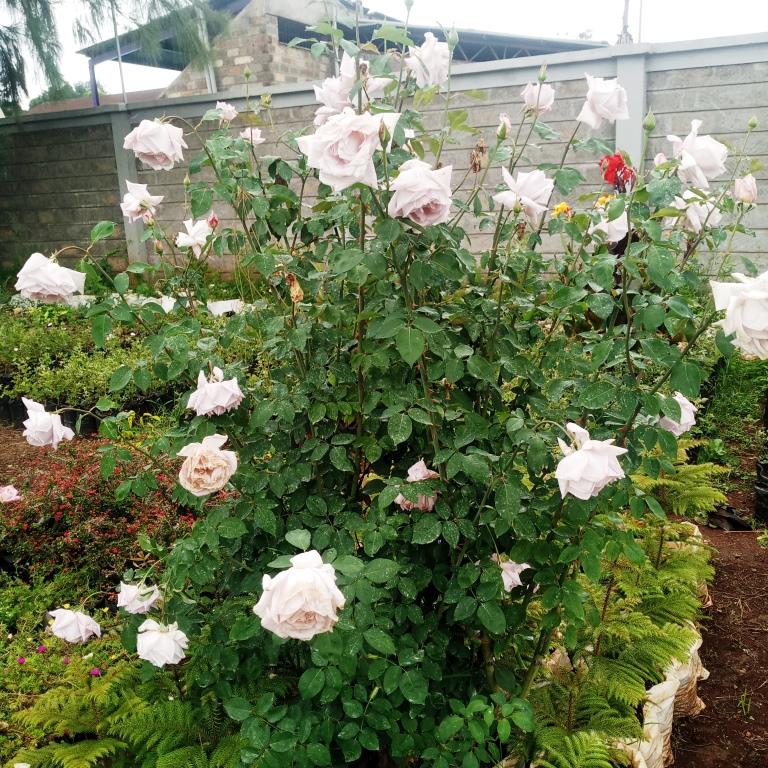
In this article, we will look at how to grow roses; from selecting varieties, rose planting and rose care
2. What are roses
The genus Rosa consist of about 150 species of semi evergreen or deciduous perennial shrubs and climbers.
They have erect, arching, scrambling and at times arching stems. The stems can be prickly or thorny. The leaves are alternate and measure from 2.cm (1inch) long in miniature roses to 18cm (7inch) or more in shrub, bush and climbing roses. Each rose leaf usually has 5 or 7 leaflets. Roses are found in a wide variety of habitats where they grow naturally; Asia, Europe, N. Africa and North America.
Rose flowers are attractive and often very fragrant. They are borne solitary or in clusters and vary greatly in color, size and form.
3. How are roses classified?
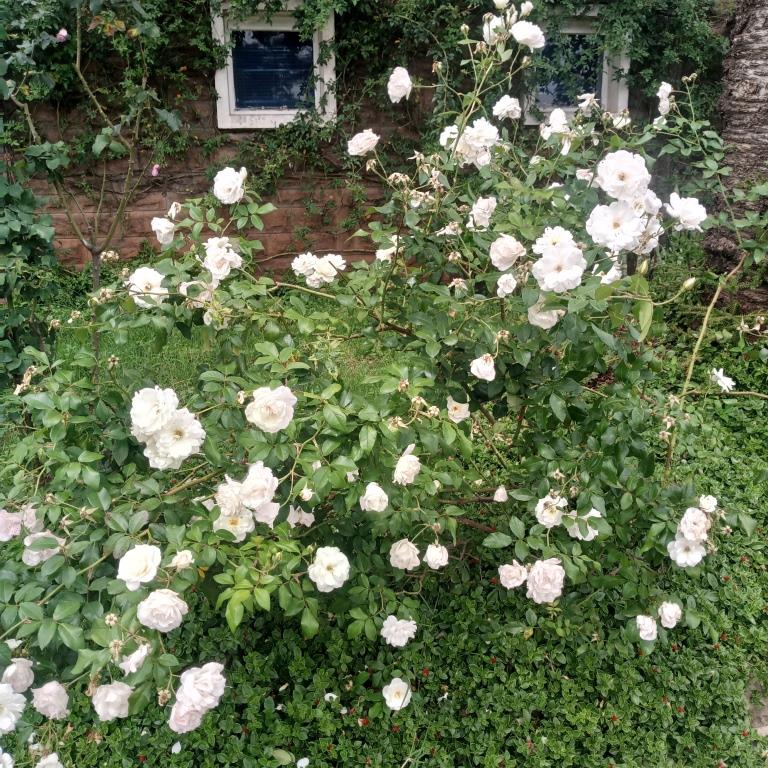
i. Species or wild roses
These are the original roses. They are either shrubs or climbers. They mostly bear single, 5- petalled often fragrant flowers in early summer. Species roses flower in one flush on shoots from second year wood. The flowers are followed by red or black fruits (called hips). Species may also include interspecific hybrids which share most of the characteristic of their parent species.
ii. Cultivars are derived from crossing species roses. They number in thousands and are very varied in habit. The flowers last longer than specie roses. Cultivar flowers can be single (8 petals or fewer), semi-double (8-20 petals), double (20 petals or more) or fully double ( over 30 petals). They are remontant (flower severl times during the growing season).
Cultivar roses are further divided into Old Garden and Modern Garden roses.
4. Choosing the right rose variety
For the home gardener, the choice of rose is almost limitless. But how do you pick the right rose variety for your garden? Consider the following factors;
i. Climate
First you need to know your climate. While roses are highly versatile, there are some roses that do better than others in certain climatic conditions. If you are in a coastal area, you need roses that are tolerant of saline conditions and heat. Similarly, if you are in the highlands or temperate region, there are roses that will thrive here more than others.
ii. Variety
Some rose varieties will flower once in summer. Other are remontant and will flower for extended periods. Many more varieties have giant blooms in dramatic color. The choice of the rose plant will be based on what appeals to you; is it the size or the number of blooms, the recurring flowering, the resistance to pest and diseases or is it the ease of maintenance.
Iii. Space
This is a good factor to consider. Some rose varieties are ramblers; they will grow all over if unchecked. Some rose shrubs also grow very huge. If the only space you have is a balcony, perhaps it would be ideal it go for miniature roses.
Iv . Ease of maintenance
The easy of care is an important factor to consider. Roses can be demanding in their needs and for a newbie rose grower you are better starting off with tough plants that you will easily manage.
5. Popular Rose Varieties For the Beginner Gardener
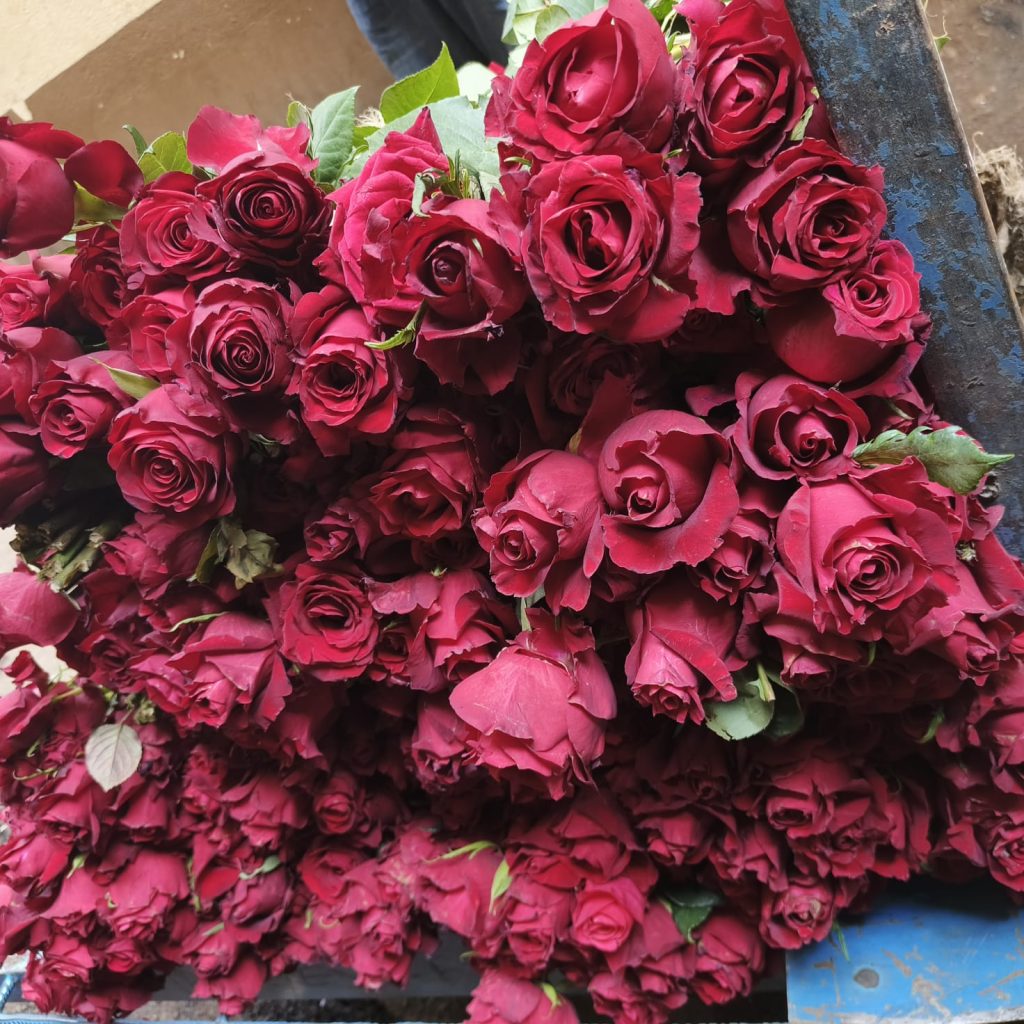
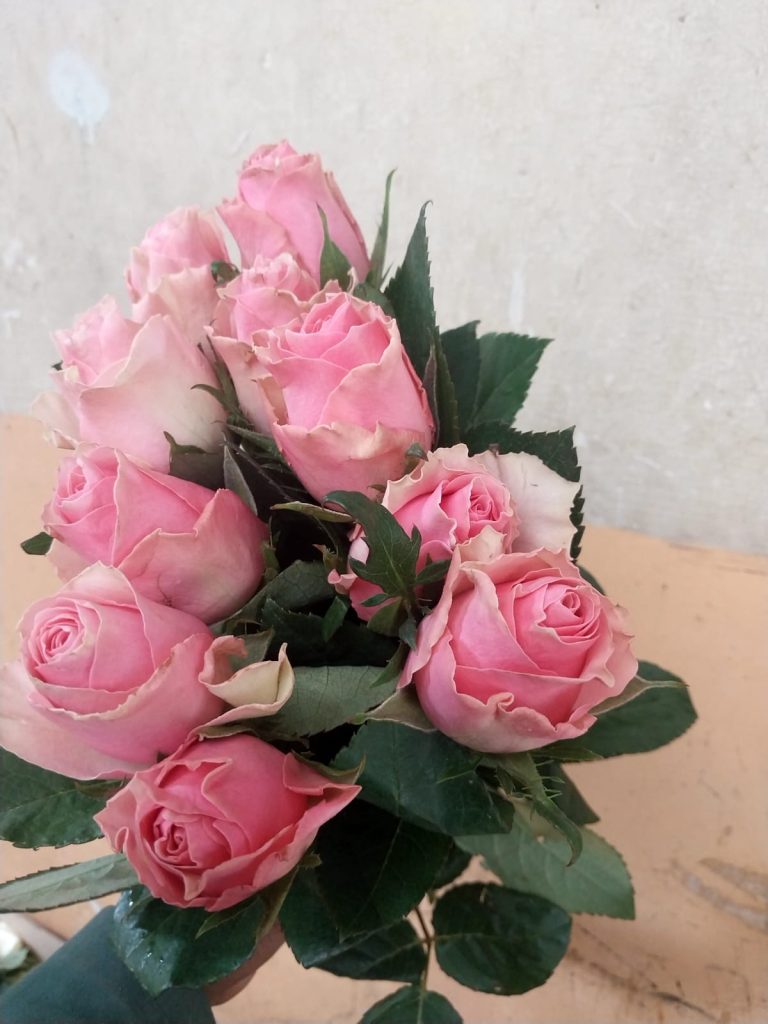
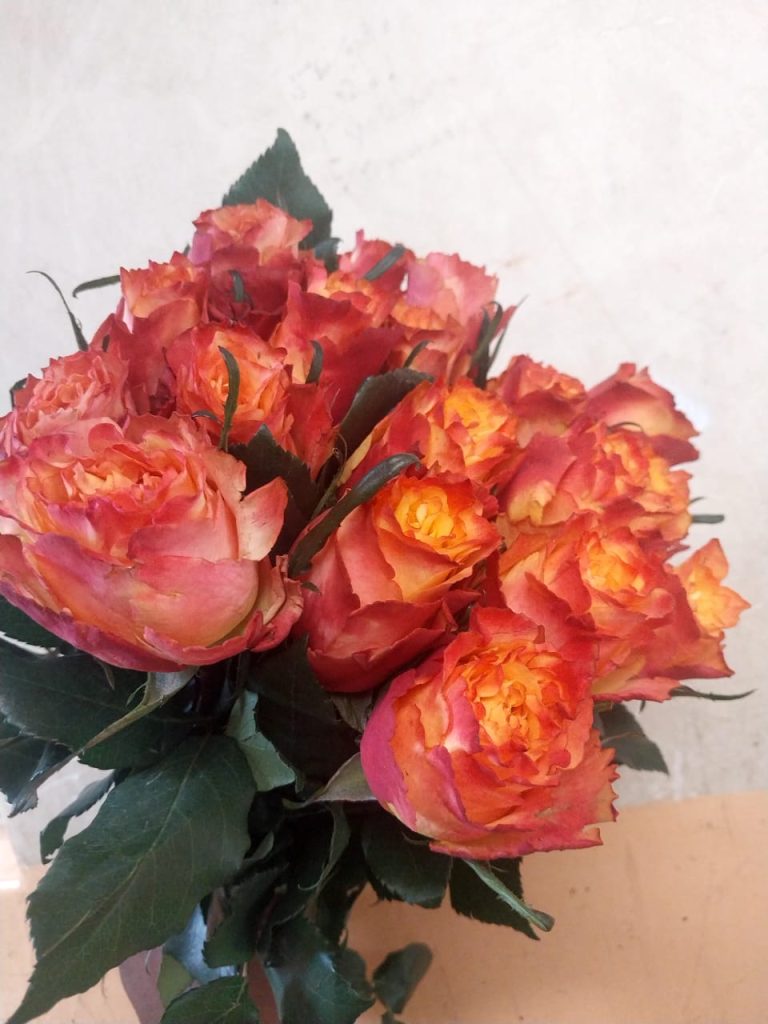
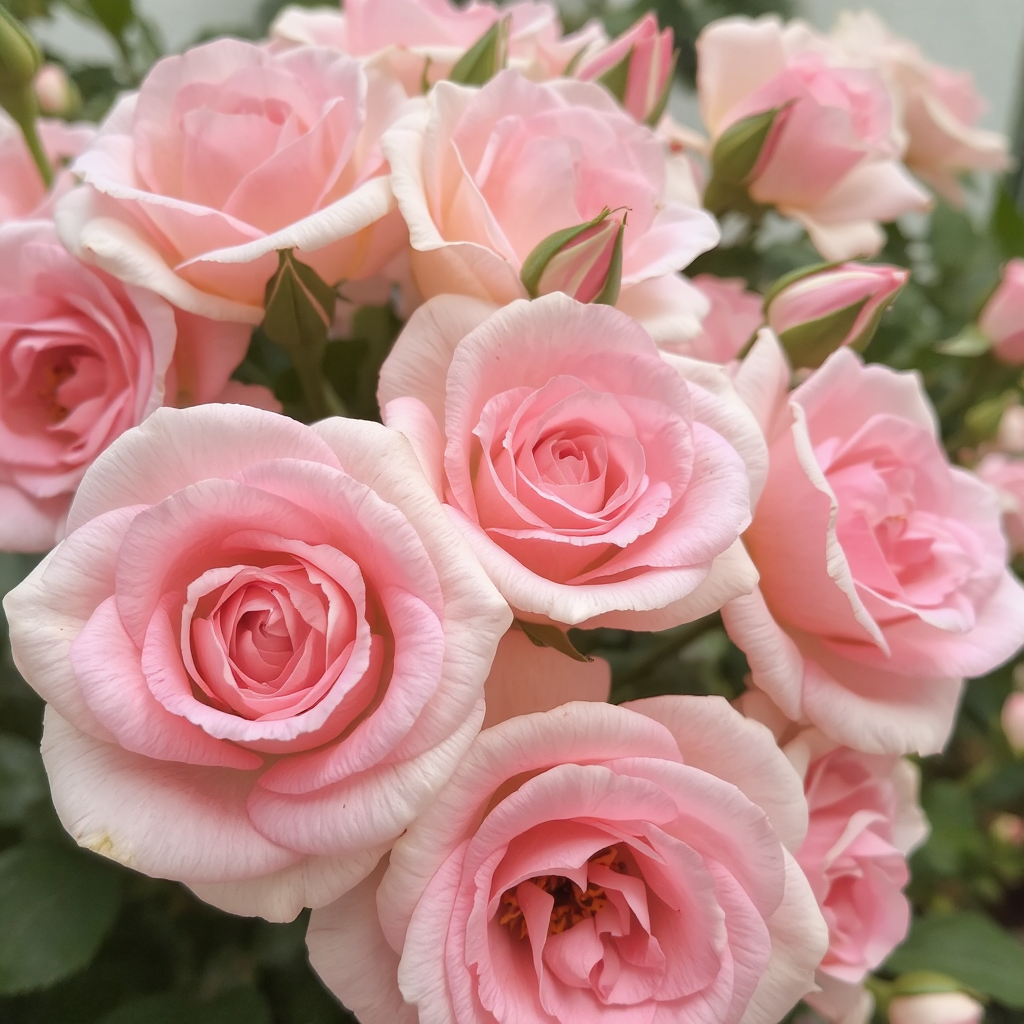
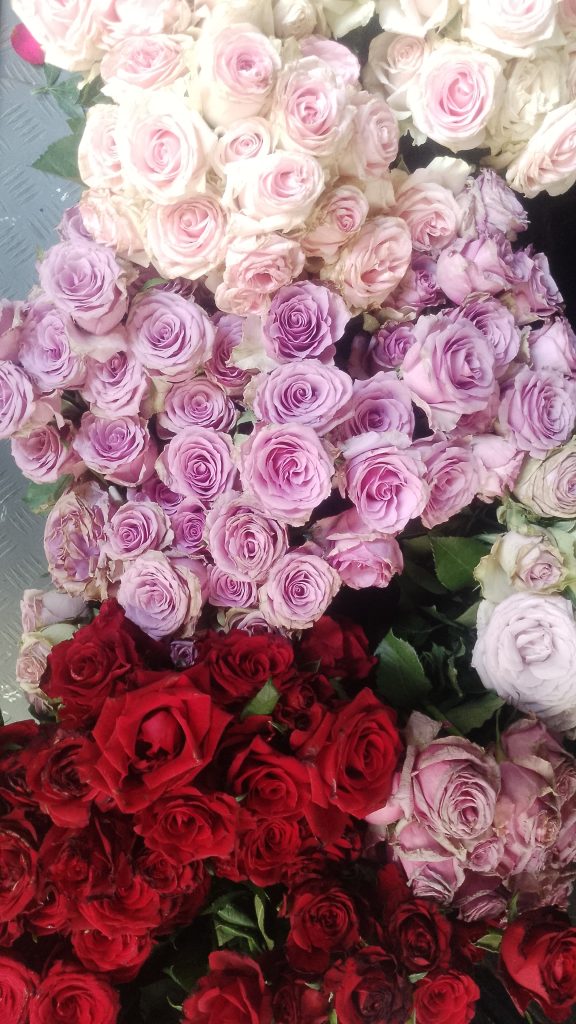
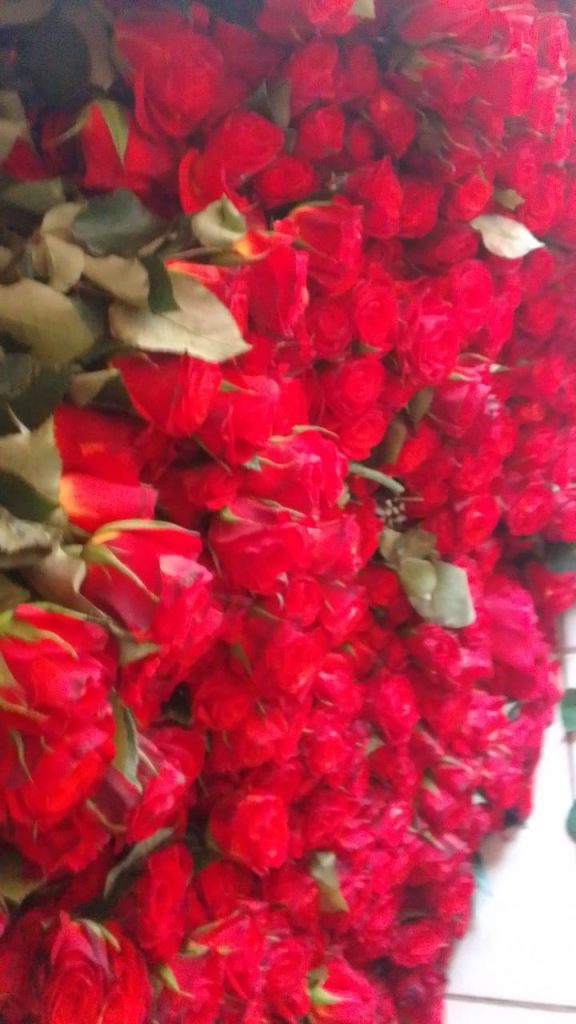
- Floribunda (cluster-flowered bush)
These are free branching shrub roses that bloom more than once in a growing season (remontant). The flowers can be single to fully double and are borne in clusters of 3-5. They are ideal for hedges or borders. They flower from summer to autumn from second year wood or new wood.
- Hybrid teas (large flowered bush)
Free branching shrub roses of upright or bushy habit. The flowers are large, usually scented, and are solitary or borne in clusters of 3. They flower from summer to autumn on shoots from second year wood and on new wood. Use hybrid tea roses in hedges or as in a formal bed. The make good cut flowers.
- Climbers
Vigorous climbing roses with thorny, arching, stiff stems. The foliage can be dense, while the flowers the scented flowers grow in clusters of 3-7. Train against a wall or fence or use it to cover garden structures like pergolas and trellises.
- Ground cover bush or shrub
These are spreading or trailing roses. The flowers are single or full double and flower on new shoots from second year growth. Some flower o new shoots. Many of these roses bear flowers along the stems. Use it for beds, embankments container or for trailing over walls.
- Rugosa
Hardy shrub roses with tough, wrinkled, bright green leaves. Most rugosa roses have prickly stems and bear single or semi double scented flowers. in clusters of 3-11in summer to autumn. Flowering is followed by tomato like red hips. Best used as hedges, in garden beds, border or as specimen plants .
- Rambler
A larger varied group of roses that is known for their vigorous climbing characteristic. Flowers are in cluster of 3-21 single to fully double in summer. Idea for training over pergolas, walls, fences and into a tree.
e) Dwarf cluster flowered bush (patio)
bearing flowers in clusters of 3-11 that are tiny unscented in flushes from summer to autumn. Suitable for low hedges and for containers.
- Shrub Roses
A diverse group that includes hybrid musk roses. Larger than bush roses with thorny stems and single to fully doubled scented flowers borne in many flowered clusters. Ideal for border, bed or hedges . Some make excellent specimen plants. They are robust and easy to care for besides being very hardy and disease resistant resistant.
- Preparing the garden
Roses thrive in full sun. Identify a location that receives full sun for at least 6 hours a day.
Roses can be planted in a dedicated rose bed, in hedges or containers. Whichever way you plant ground preparation is essential. Dig up the ground, breaking it into loose friable soil. Remove any debris and dirt within the planting area. More importantly, add compost or manure to enrich the soil. Dig and mix this compost or organic matter into the ground to be available to the roses in the months ahead. Compost and organic matter also makes the soil more free draining. If you can,ensure that the pH is between 6 or 7.
- Planting Roses
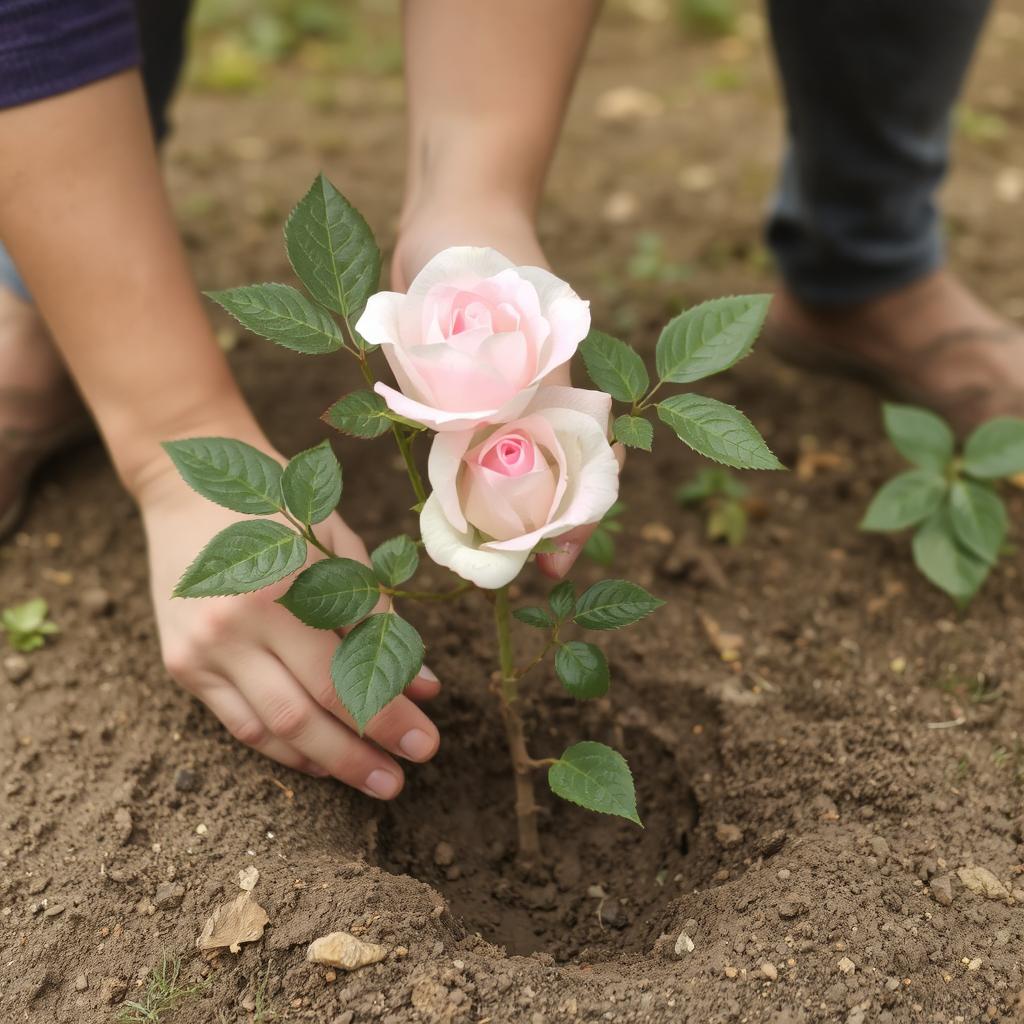
When to plant
Roses can be planted any time of the year. But it makes sense not to plant during the cold season as the plants will immediately go into dormancy. Normally we plant our roses during the warm season so that they take off as early as possible.
Plant roses clear of any trees or nearby shrubs. Root competition from tree and other shrubs may prevent rose roots from receiving enough water.
A.Planting a bare root rose
- Dig a hole of width twice the size of the root ball and twice the height of the root ball root balls height
- Add compost and soil mixed in equal ratio the soil
- At the center of the hole, make a mound so that height to the top of the hole is equal the height of root ball.
- Trim any roots that are damaged or coiling.
- Upon the mound of soil, place the rose on top, spreading out the roots in different directions.
- Backfill starting with the edges until the soil level is same level as where the rose stock
- Water thoroughly.
B. Planting container grown rose
For container grown roses, the planting is straightforward. After backfilling the hole with compost, invert the container and gently remove the plant. Place the plant such that the graft node is above the soil level and the plant is at the same planting depth as it was in the pot. Backfill and water thoroughly.
Whether bagged or bare root, roses need spacing of at least 1 meter (3ft) away from each other
7. Watering Roses
Watering
Water roses twice a week in hot weather and once a week during mild temperatures. By all means ensure your roses are watered deeply.
Roses that are not receiving enough water will not grow lower leaves may turn yellow because they are being bypassed as the sap goes straight to the top growth. When the yellow leaves fall off the stems may suffer sunburn which can lead to stem canker and whole rose eventually dies. Nearby tree and shrubs will send their roots to rose bed to seek water, so if you don’t water well, it is the roses that will suffer.
Fertilizing
Give your rose bushes regular rose food (fertilizer) about once every four weeks.
Mulching
Mulching keep the roots cool and helps retain moisture use mulching materials like dry grass (avoid using fresh lawn clippings), wheat straw, pine bark, or pine needles. Leave a circle of about 30cm around the stem to facilitate fertilizing and discourages white ants. If you area is windy, support your roses with a stak
8. Pruning Roses
Winter pruning
Don’t be too strict with yourself when it comes to pruning your roses. There is no wrong way prune a rose. You can do severe pruning for restoration purposes or light pruning to encourage flowering. Light pruning is simple and quick. It is ideal if you are not so confident because more stems remain on the bush, there is more food stored, which kick starts growth in spring. However if your roses are planted too closely, light pruning may not be enough.
On the other hand, severe pruning is ideal for rejuvenating older rose bushes. It also produces uniform height in beds during flowering. Prune severely if your roses are planted close together; say less than a meter apart. Again note that not all varieties lend themselves to severe pruning.
For severe pruning;
Severe pruning is done the same way only that you identify last season’s basal shoots and cut out the rest. Cut the basal shoots down to about 40cm-50 cm above ground and remove all remaining side stems and forks. Pull off all the leaves
Summer rose pruning
Summer pruning is not as dramatic as winter pruning. When cutting a bush to reduce its height, make sure there are at least 3 levels left counting from the intended cut downwards.
– cut away small stems with twiggy growth. Pencil sized stems or bigger offer good base for new growth. If a stem has formed two forks cut away one.
-If the lower part of the bush has lost its leaves, clean out the twiggy growth on the lower part leaving the upper leaves and stem intact. This cleaning out will result in sprouting of dormant eyes.
– Miniature roses and groundcover roses a can be trimmed with a hedge clipper but do not cut too low into the defoliated wood. This is especially important for groundcover roses because when the upper stems are removed , the lowwr horizontal stema are exposed to thwe sun.
Here is how to our step to step guide to light pruning;
- Cut tall rose bushes uniformly down to 70cm above the ground, medium high bushes can be cut to 50cm bove ground while miniature roses can be trimmed to 20cm.
- Remove dead branches and older main stems . Cut forked branches back to a single “tine”.
- Thin side stems bthat are left or they can be cut back to about 20cm.
- Pull off all leaves because they can habour pests and diseases.
Whichever pruning you do, dig in compost ,superphosphate and fertilizer around each pruned bush and water well after thais spray with an insect spray to kill dormant fungus and pests
Whenever you prune severely, ensure that roses good aftercare. The beds should be enriched with compost and well aerated otherwise the roses will struggle
– Loose the soil around the bush to allow water and air to penetrate the roots. Don’t place mulch too close to the stem.
Spray roses after you have finished pruning. As new growth appears watch out for powdery mildew and spray if need be.
Conclusion
While for the beginner gardener rose growing may seem a difficult undertaking, it is actually very easy. You only need to be patient and willing to learn from your mistakes and from other gardeners. hope to see yoor roses in the comments section soon!!

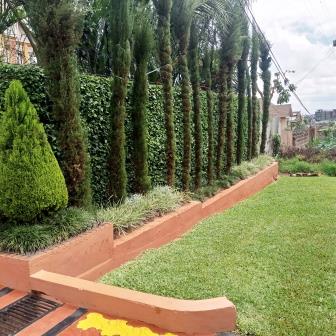
Leave a Reply